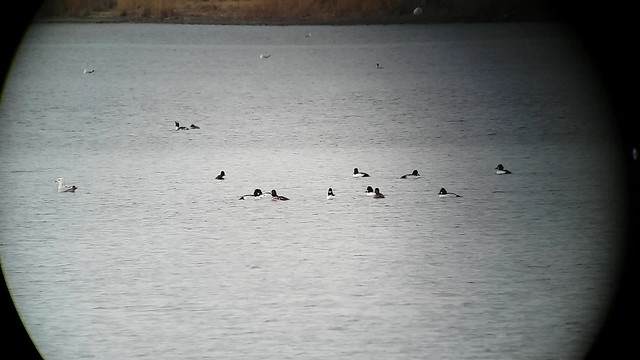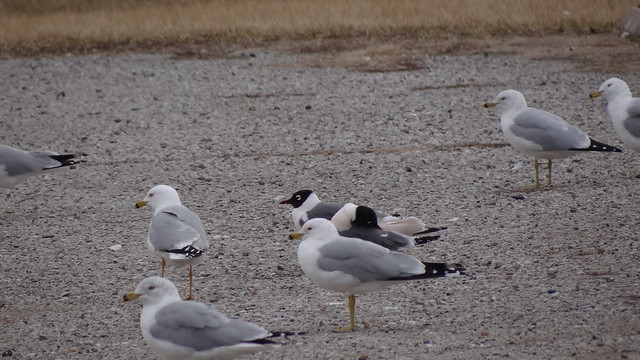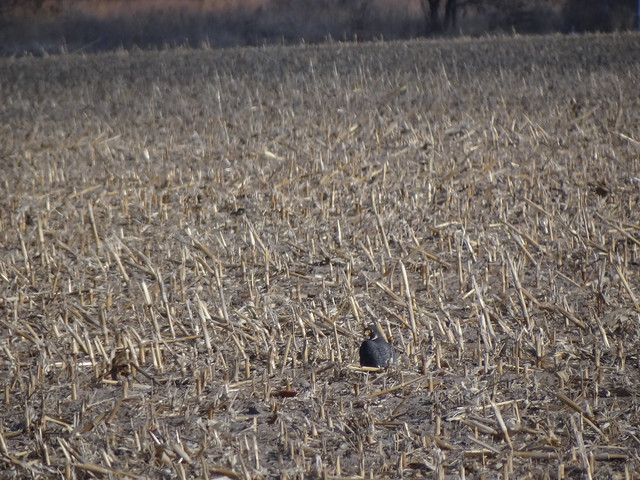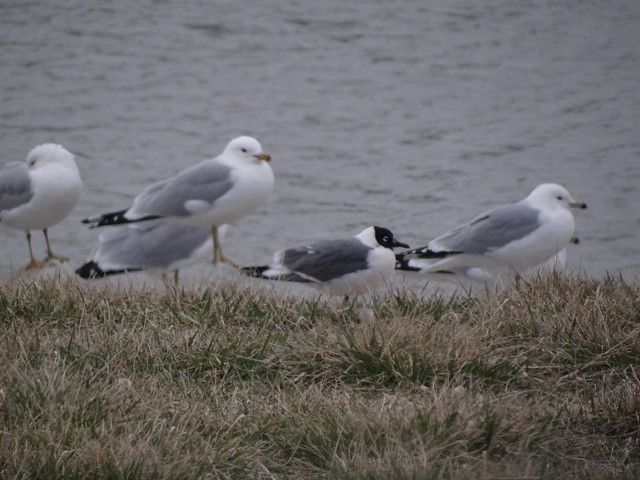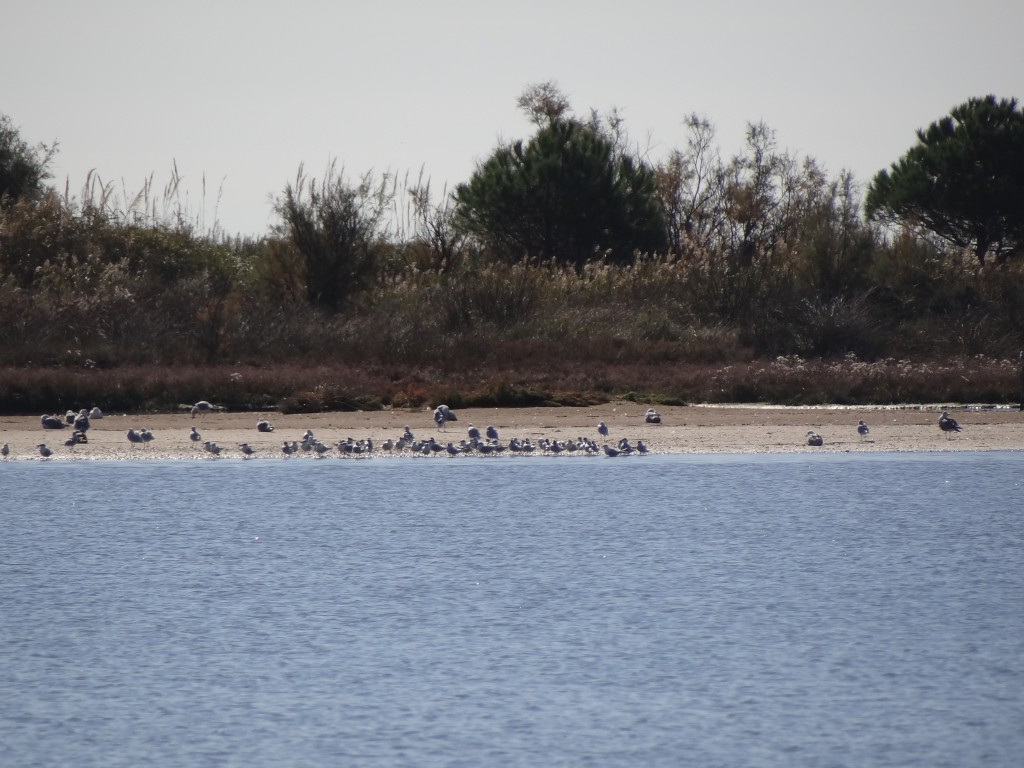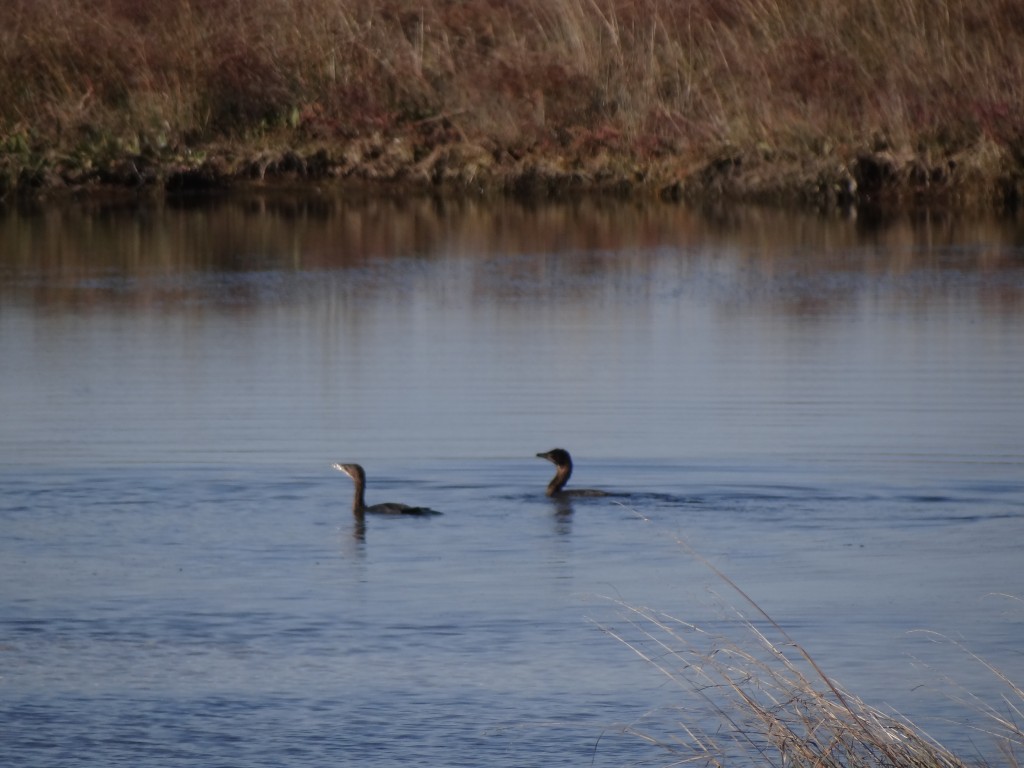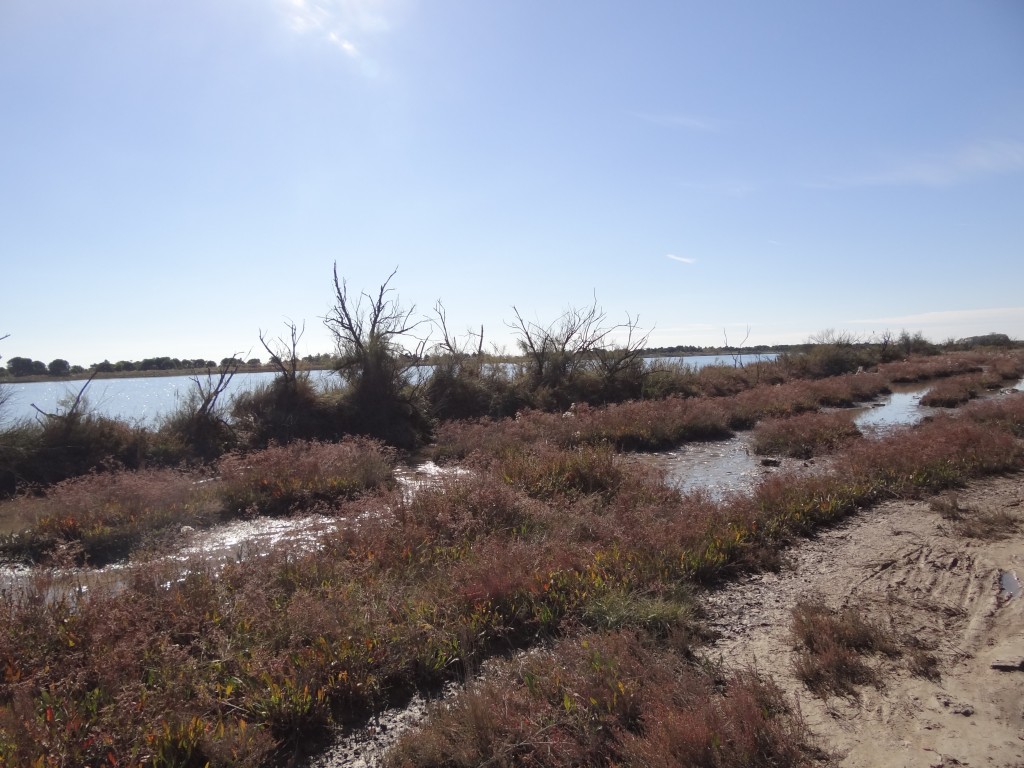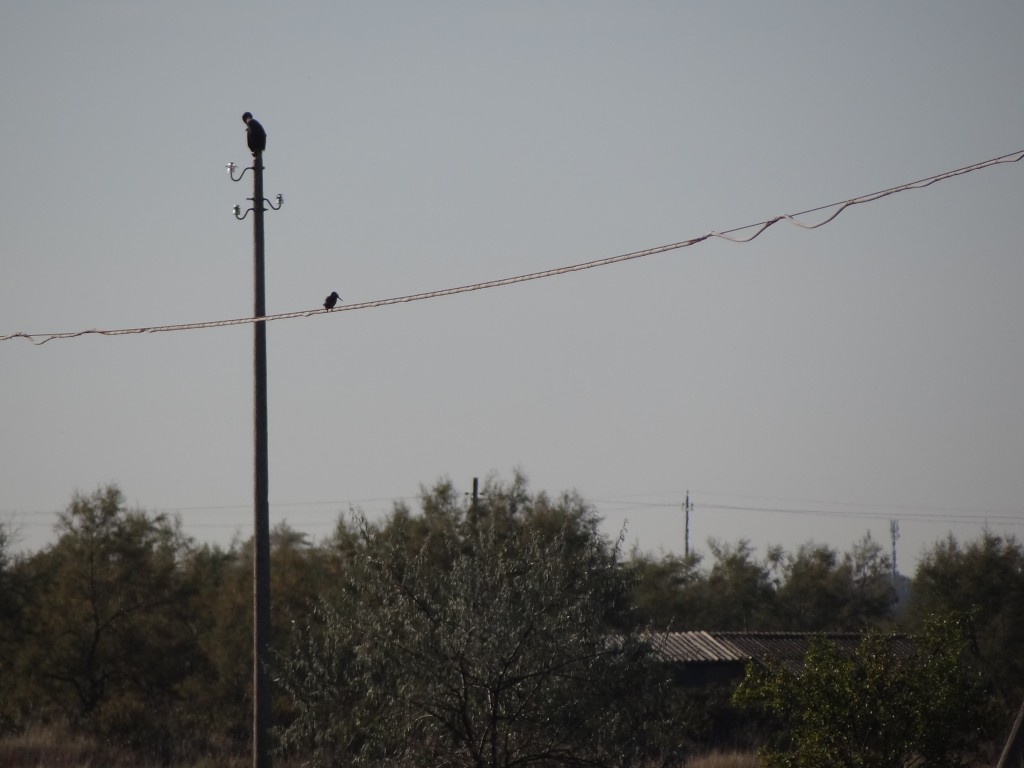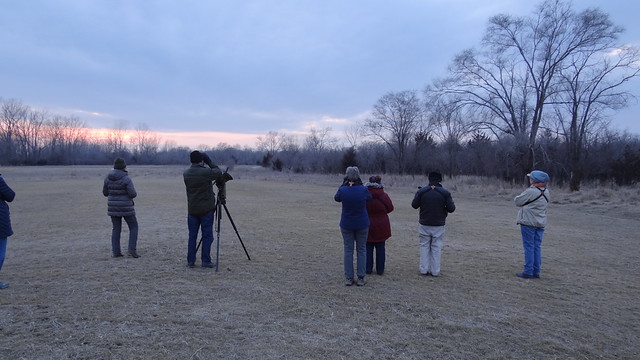
We’re off to a great start. Most important, everyone got here — a circumstance not to be taken for granted given how many of us were flying from the east coast.
Following quick introductions, we hopped into our nimble little bus and drove the five minutes to Carter Lake.
It took even less time to find our target, the Harris sparrows at the only feeder in town. We’ll see more, perhaps many more, but it’s a grand bird to start the tour with, a lifebird for several of us, even.
Then across the Missouri to Lake Manawa, where got to practice our scaup identification (all lessers today) and admire the courtship antics of common goldeneye.
Lesser scaup and common merganser were the most common birds on the lake, but scanning carefully gave a nice head start to what is likely to be a very complete anatid list this week.
I was happiest to see that the Franklin gull count had risen to a good score of birds, including several loafing on the pavement at one of the pulloffs.
Another lifer for a couple of the group, and even those of us who had seen hundreds and thousands of them over the years couldn’t fail to be enchanted by this graceful gull and pink.
Daylight saving time falls awkwardly this year, so we pulled ourselves away from the lake for an early supper at La Mesa, excellent as usual. We got back to Manawa with some time to scan the big, and ever bigger, gull roost on the lake. Danny found what struck me as likely a first-cycle Thayer’s gull, with neatly patterned plumage and apparently not quite black wing tips; had it been half a mile closer it would have made the day’s list. Easier to identify was an adult lesser black-backed gull, expected nowadays but always exciting.
As the sun was getting dangerously close to the western horizon, we drove on to my favorite woodcock spot. It wasn’t outstanding this evening — too much noise from that horrible power plant — but we heard probably three birds buzzing and had good sustained looks at one in display flight against the blue and pink sky. Snow geese were passing almost continuously overhead, and one of the closer flocks had a couple of Ross geese, the first of what I suspect will be good numbers this coming week.
We were back at the hotel at 7:30, happy with the day and eager for tomorrow. Feeling good about this tour!


